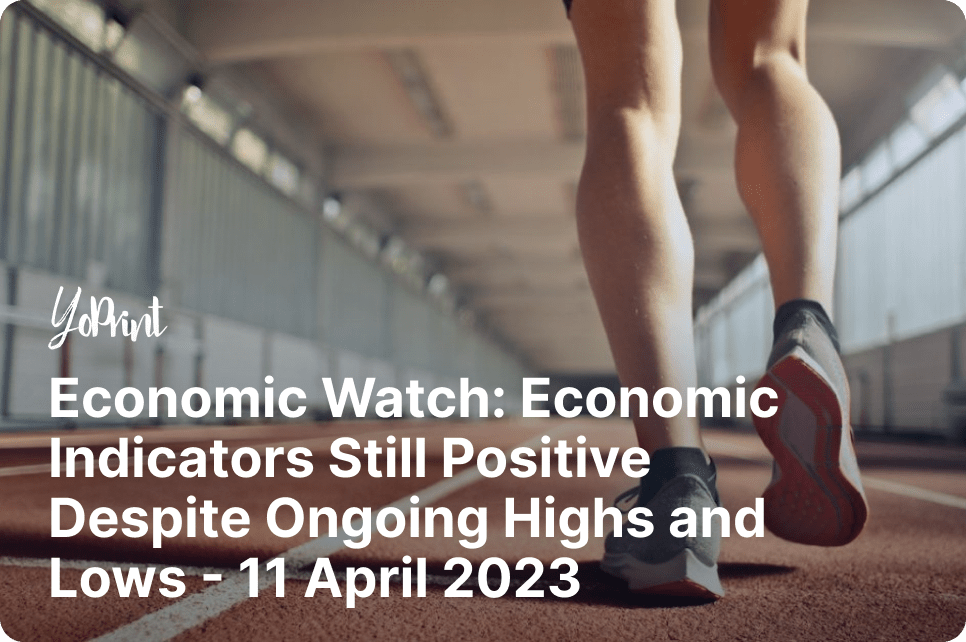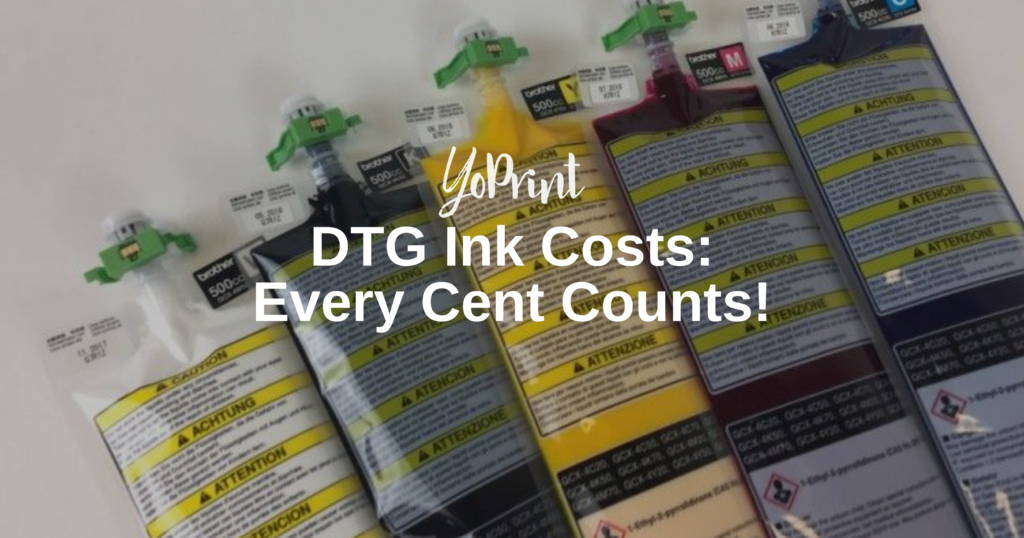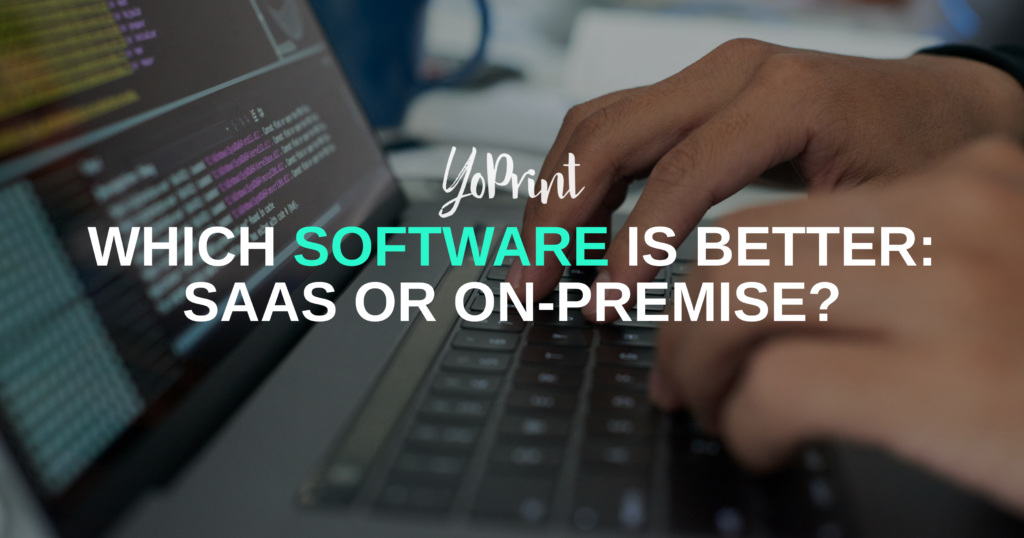- Consumer spending is still going strong, particularly on leisure, travel, and activewear; footwear is a big hit in the sporting goods segment
- Job market remains robust but higher than expected jobless claims (after revisions) are a cause for concern
- Make the most of the current consumer spending trends before the economic climate changes
The good news is that recent economic indicators were fairly stable despite the recent banking scare and the Federal Reserve’s modest tightening of credit conditions. While it’s still too early to say whether more tightening is on the cards, we’d advise you not to get too caught up in the gloomy mood that economists are painting of the future. For now, consumer spending is still fairly strong, and you’d do well to leverage it to your advantage.
Consumer Spending is Still Happening
In our previous report, we noted that consumers are still going out and spending on food and events as summer approaches. This has stayed the same for the most part since then, although total card spending per household did fall 0.4 percent year-on-year in the week ending March 18th. In fact, card spending has started slowing as early as January; however, it’s not been significantly impacted by regional bank stresses.
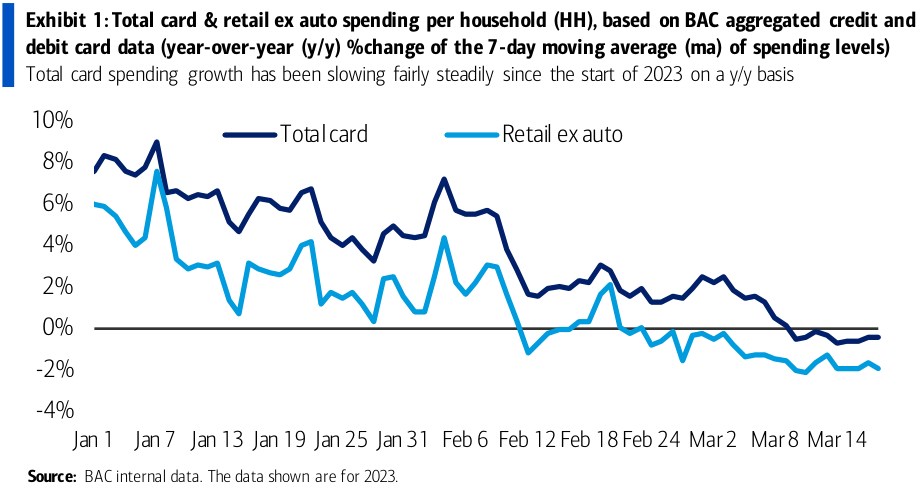
Card spending remains relatively unchanged for the travel and leisure sectors, so we’d advise that you keep a close eye on these niches as we advised in our previous economic watch. Find ways to partner with airlines, gyms, restaurants, and other related businesses and promote printed shirts or other kinds of merchandise that will appeal to them and their customer base.


Meanwhile, foot traffic has sunk to 2018 levels, especially as more consumers purchase goods online. You’ll note a decline in home improvement, home furnishings, superstores, and department stores, which has been lagging since the previous months.
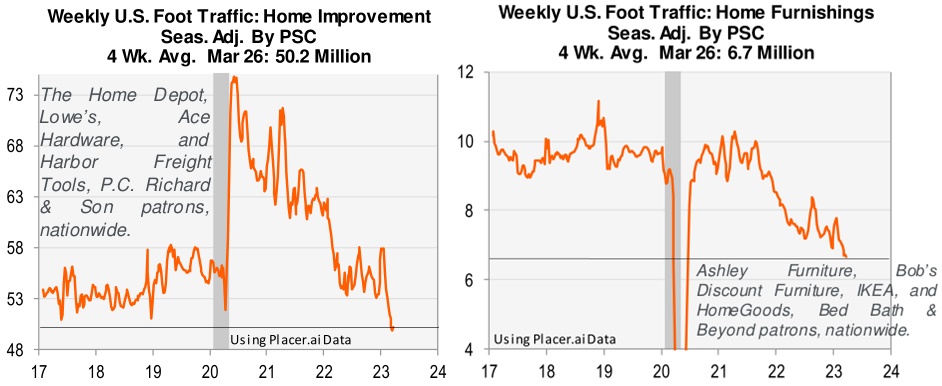
Home improvement saw a significant spike in foot traffic following the end of lockdown measures, then tapered off to pre-Covid levels by 2022. Home furnishings had a much larger lag due to Covid and has yet to return to pre-Covid levels. Even luxury furniture brand RH faced a heavy downturn, laying off 440 workers “as part of a [major] restructuring effort.”
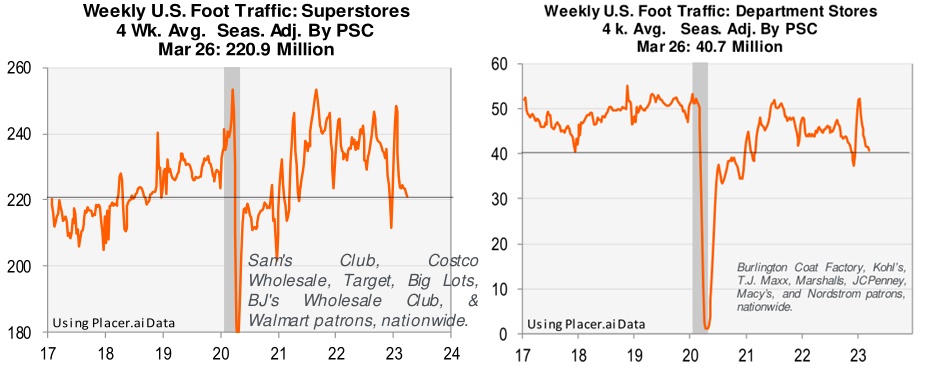
Superstores and department stores paint a similar picture, with foot traffic fluctuating with changing prices and growing household savings. With Americans flush with cash post-Covid, many households stocked up on various groceries amidst fears of further economic uncertainties before tapering off in early 2023.
Conversely, foot traffic at discount stores, dining, fitness, and leisure & recreation are improving (in line with card spending trends).
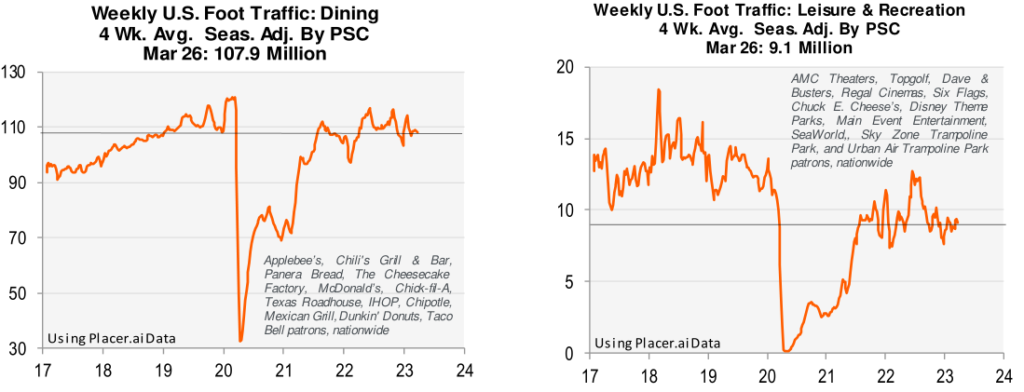
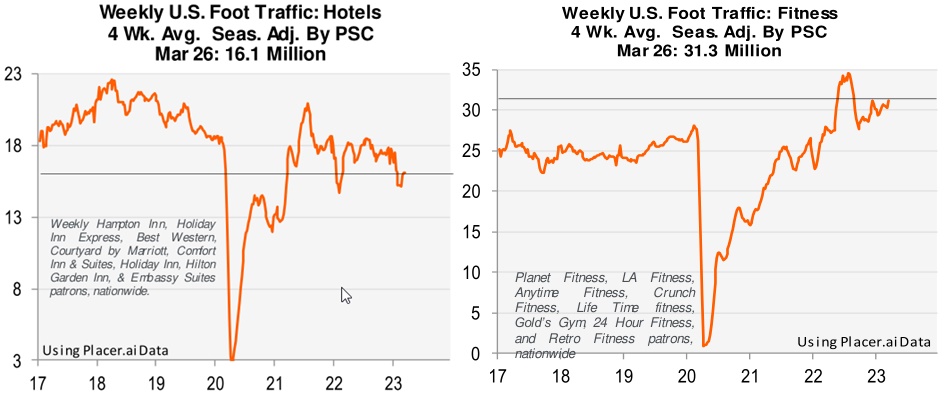
These sectors were heavily affected by the Covid pandemic and have since seen rapid recovery following the end of Covid restrictions. Most of these segments have yet to return to pre-Covid trends, especially as price gains will potentially impact consumer spending habits and force them to start saving. For now, current trends indicate relatively positive gains.
Consumers still have spending power, especially as “nominal income growth is still $1t above its pre-Covid trend” thanks to job opportunities and better pay. These contribute to an excess in income and savings, allowing nominal consumer spending to continue: it’s now “a massive $1.5t over pre-Covid trend,” as Piper Sandler reports.
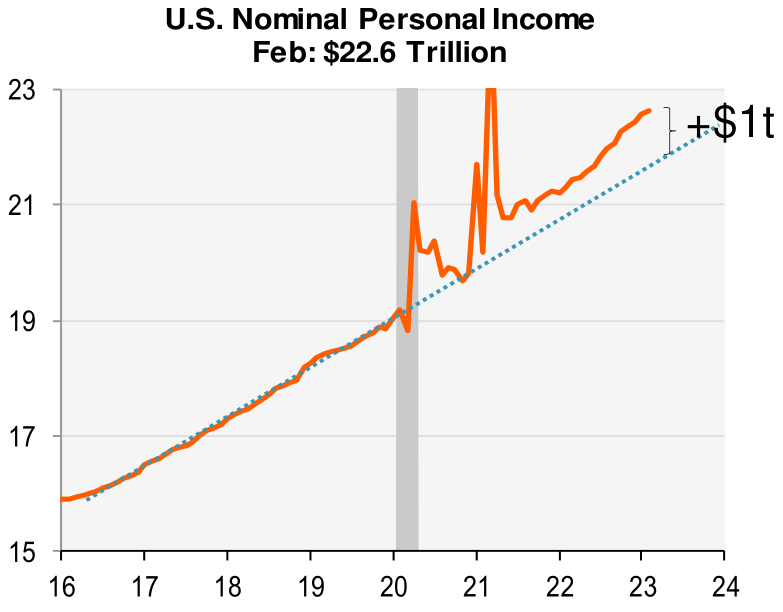
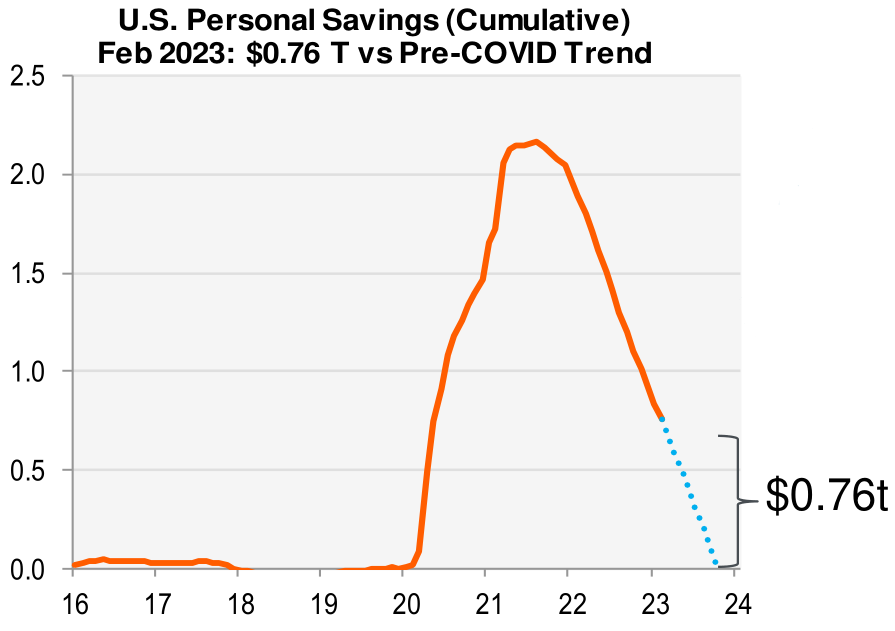
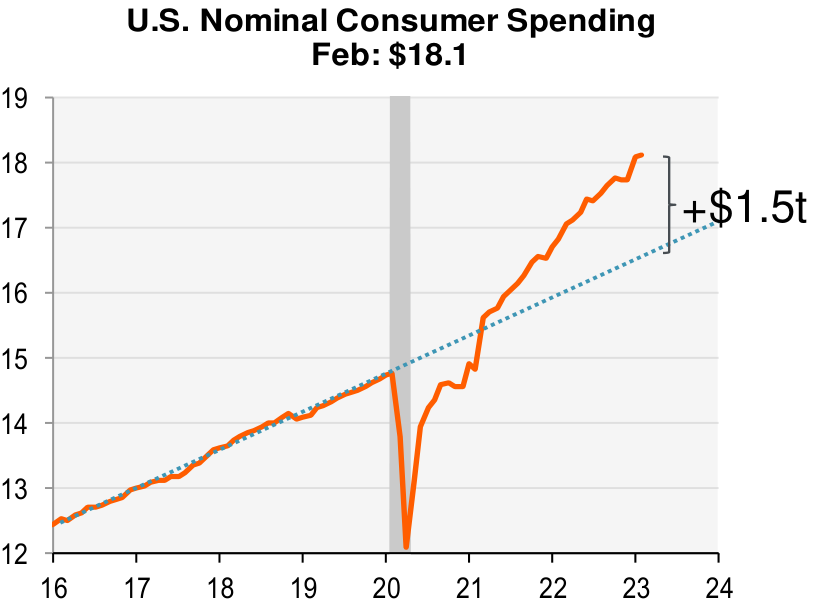
This is unlikely to last for long, however. If monetary policy tightens further after the Fed’s meeting in early May, corporate profits may feel the pinch once consumer spending fizzles out as prices (and compensation ratios) continue to rise. This will force companies to let go of staff in order to stay afloat; unemployment will rise, and the economic outlook may feel grim for a while.
As high prices are not sustainable in the long term, companies will eventually need to cut their costs and prices. Even McDonald’s, long considered a stable, recession-proof corporation, is going through rough patches as it temporarily shuts down its offices and preps for “a broader restructuring plan” – including laying off employees.
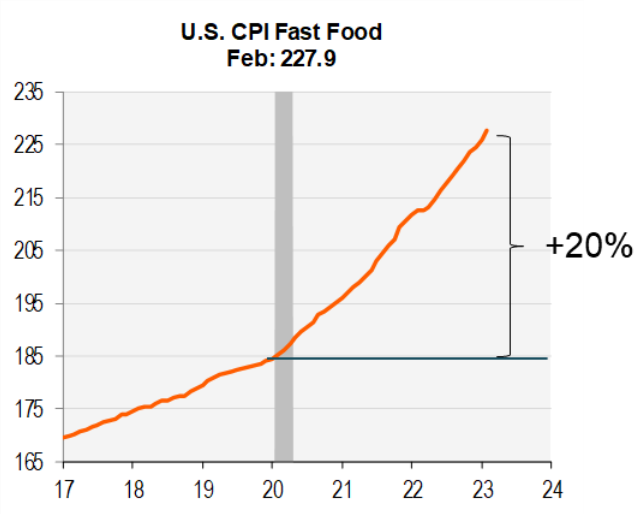
Leveraging Activewear
Of interest to your print shop is what consumers have been spending on lately, especially activewear. In fact, Nike’s implied sales at various retailers increased 21 percent year-on-year, with most purchases being footwear. Despite a fall in foot traffic since the fourth quarter of 2022 and a 7.9% month-to-date decline in March, a modest increase in web traffic for sporting goods retailers may have helped retain consumer interest. In the case of Dick’s Sporting Goods (DKS) and Academy Sports + Outdoors (ASO), February web traffic increased by 15 percent and 20.6 percent, respectively.
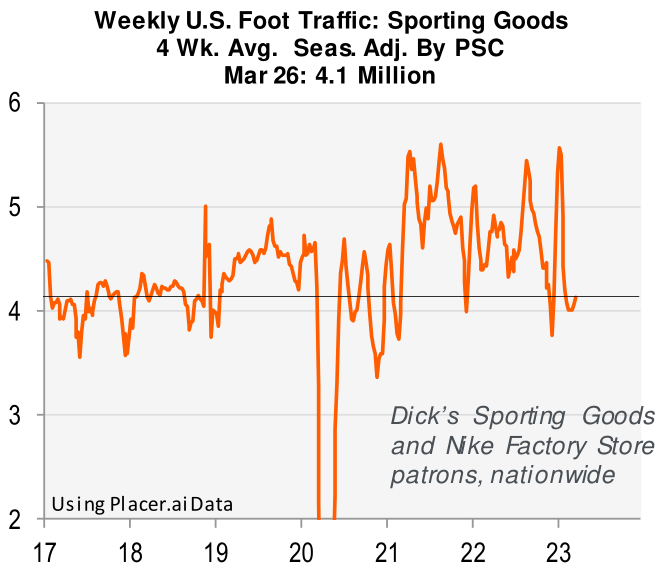
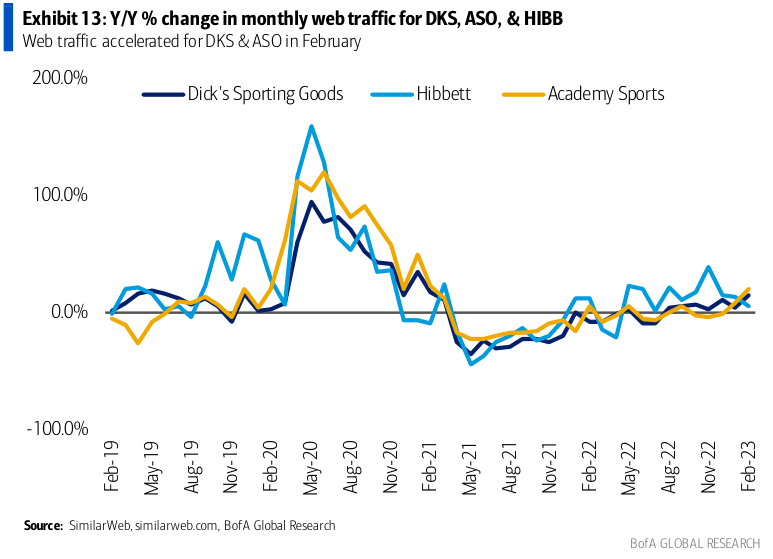
With how athletic wear is doing fairly well, especially with summer rolling in, you can offer custom athletic apparel printing in your shop to draw in an interested crowd. Given footwear’s higher demand, you could also provide customization options for footwear – be it embroidery or some other application.
Job Market Remains Robust
The Labor Department’s recent report noted little change in the unemployment rate, going down to 3.5 percent from 3.6 percent in February. Most new employment occurred in “leisure and hospitality, government, professional and business services, and health care.” Meanwhile, nonfarm payrolls increased by 236,000 jobs in March, with job growth averaging 345,000 per month for the first quarter.
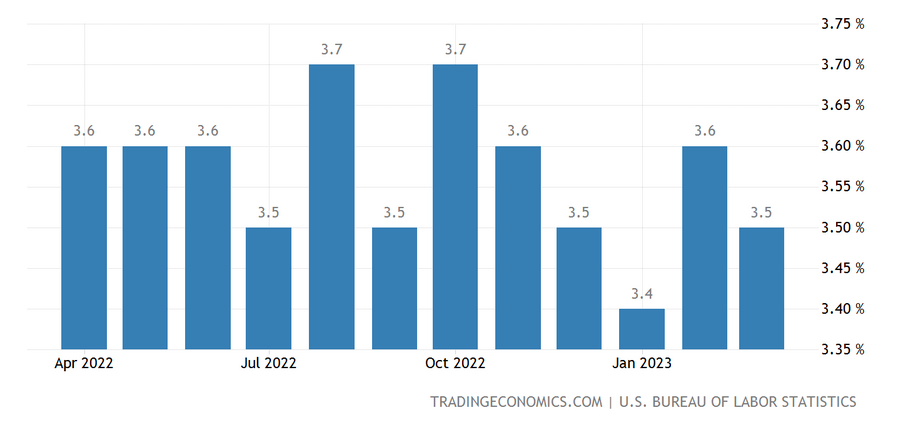
The February edition of the Job Openings and Labor Turnover Survey (JOLTS) recorded 9.93 million available positions, a drop of 632,000 from “January’s downwardly revised number.” This also marks the first time the vacancies dropped to below 10 million since 2021. Jobless claims remain at historic lows, dropping 18,000 to a “seasonally adjusted 228,000” for the week ending April 1st (and this is no joke).
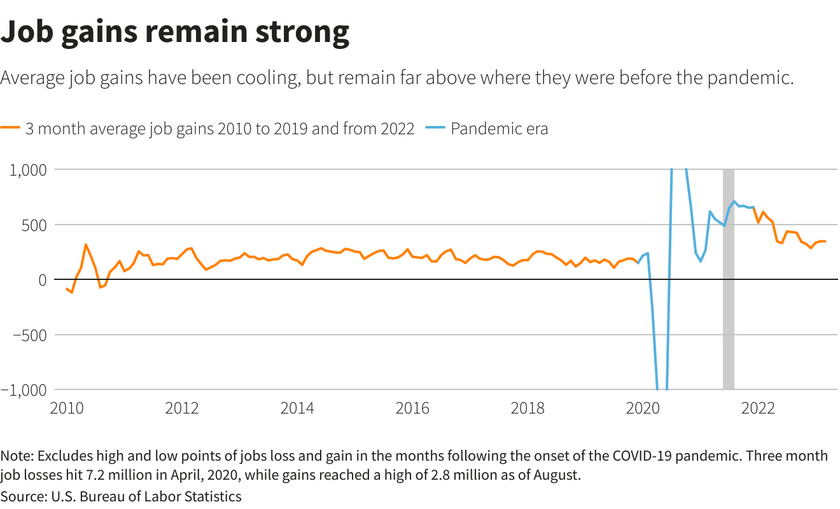
Despite this trend, the “much larger Covid-hit sectors” are still looking to fill vacancies, while high nominal consumer spending enables service-oriented sectors to keep hiring. Wage gains are slowing, but it’s not enough to help the Fed reach its 2 percent inflation target, especially given the aforementioned above-trend nominal consumer spending still propelling gains.
However, given the JOLTS figures and declining corporate earnings, these signs point to a slowly softening job market. For now, though, consumers are still spending, supported by a hot job market and better income levels – as seen in the wage hike of 30 percent “over four years” for Delta Air Lines pilots.
Take this as good news that the economy’s still doing alright for now, despite the drop in consumer sentiment. As long as consumers and companies have money, they can afford to contract your print shop’s services. Look – and be prepared – for signs of potential headwinds, such as weakening labor demand and higher unemployment.
ISM Continues Contracting
One particular trough to note is highlighted in the ISM’s March edition of its “Report on Business”: March’s manufacturing PMI was 46.3 percent, “1.4 percentage points lower than the 47.7 percent recorded in February.” This marks the fifth consecutive month that the PMI contracted; a score below 50 generally suggests a contraction of the economy. If you take this into context using the HOPE framework, this is usually an early indication of an impending recession.
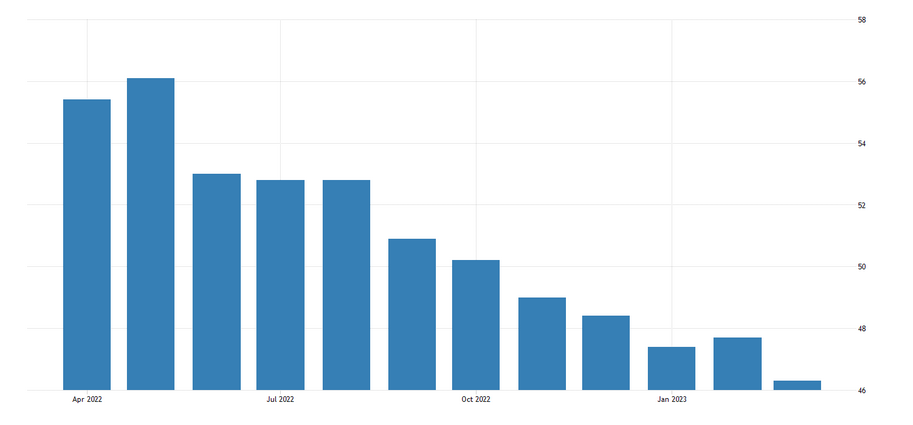
According to the ISM’s report, lead times for machinery manufacturers are “still improving” (except for hydraulic components) while prices continue to face “inflationary pressures.” The war in Ukraine and growing tensions with China are among the reasons cited for the increase in “inventory levels of imports” as demand remains “sluggish.” Even among the apparel, leather & allied products industries, business remains “slow overall.”
With everything in the manufacturing sector slowing down, it still is a significant risk to consider expanding your print shop or acquiring new equipment (as we cautioned in our previous report). Inflationary pressures will likely keep prices high, forcing you to pay more for new machinery. Similarly, the slow business apparel manufacturers face tells you that your printing business will likely grow slowly. Per our prior advice, shore up your financial position and strengthen your positive cash flow now.
What’s Next for Your Shop?
We remain cautious about the United States’ economic outlook in the next few months, with the mixed sentiment of high consumer spending and job wages but shrinking corporate profits and rising prices. March also saw a spike in corporate bankruptcies, the “highest level for the first three months of the year since 2010,” signaling possible bad news to come.
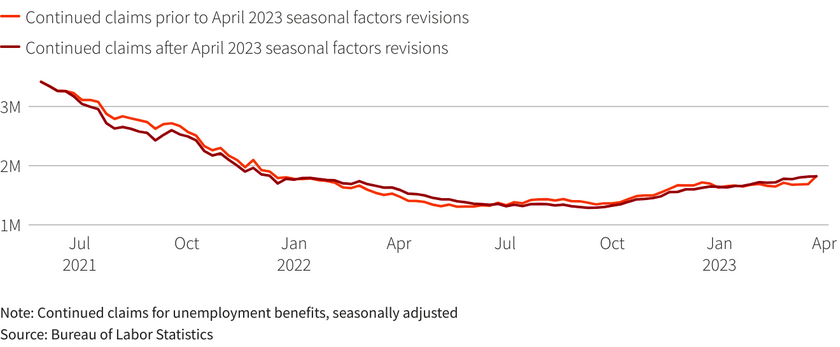
The Labor Department’s revisions to its “seasonal adjustment factors” are also a cause of concern, as the revised figures seem to indicate higher than expected unemployment claims: Reuters estimates that “[m]ore than 1.8 million people were collecting jobless payments” as of recently. On top of JOLTS figures going below 10 million, the drop in the manufacturing PMI and weakening employment among small businesses all indicate deteriorating EPS and profit margins.
Now is not the time to despair, however. Consumer spending will likely shift anytime, so make the most of this opportunity to attract new customers and retain your existing clients. Be mindful of how you manage your finances, and you’ll be able to weather the impending recession when it finally hits.
